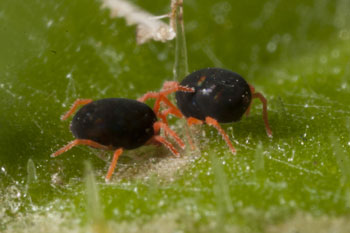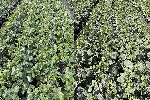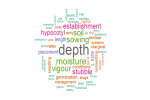Key points
- A dry start to the season last year meant canola germination coincided with peak redlegged earth mite hatchings
- It highlights how climatic extremes can affect pest management
- With resistance increasing, the best defence is preparation
Extreme fluctuations in weather patterns in 2024 highlighted the difficulties in protecting crops from pests that can exploit the impacts on weakened crops
Last year’s (2024) tumultuous climate in Western Australia highlighted how these extremes can affect pest management, especially for redlegged earth mites (RLEM).
Svetlana Micic, an entomologist and research scientist with the WA Department of Primary Industries and Regional Development (DPIRD), has closely monitored RLEM populations as part of a GRDC investment to understand why they were so prolific in 2024 and what can be done to prevent future outbreaks.
Late rains and resistance
Ms Micic says a dry start to the season meant that in many areas, canola was either dry sown from April and germinated in June or was sown in late May/early June when sufficient moisture was available.
“In most years where there is an April break, canola germinates when RLEM have not yet hatched. For many in 2024, as soon as the plants came through, the RLEM dug down to start feeding. Plants were getting damaged to the extent that in some cases it did kill crops or retard crop growth.”
Most canola was sown with insecticide seed dressings. However, under high mite pressure, seed dressings may not be enough to protect a crop from RLEM feeding damage.
We had patchy germination, so that impacted crops even more. If the whole crop had germinated at the same time, RLEM pressures would not have been as bad.
In some cases, insecticide applications controlled the adult RLEM. However, seven days later there was another hatching and while the adults were controlled, the eggs were not. Additionally, insecticide resistance is increasing. Research by DPIRD and Cesar Australia, supported by GRDC, has found that synthetic pyrethroid (SP) and organophosphate (OP) resistance is widespread across WA’s south-west, great southern, south coastal and wheatbelt regions.
 RLEM populations were prolific in 2024 and researchers are working to understand why. Photo: Cesar Australia
RLEM populations were prolific in 2024 and researchers are working to understand why. Photo: Cesar Australia
The only other registered product that works to control RLEM that are resistant to OP and SP insecticides is diafenthiuron. This insecticide needs to be applied when the plant is at the two-leaf stage.
Broadleaf weed management can help, especially in canola rotations planted after pasture. This canola is often at the highest risk because RLEM prefers broadleaf weeds as a host. This also makes broadleaf weed management in cereal crops important. “Even at low numbers in cereal paddocks, clovers and broadleaf weeds can sustain RLEM,” Ms Micic says.
Rotating chemicals is also important to help stop insecticide resistance from establishing.
But the best defence against RLEM is preparation – that is, assessing paddock risk for RLEM. “Get out there to look at the numbers in spring so that you can plan for the following year,” Ms Micic says.
Resources:

























































